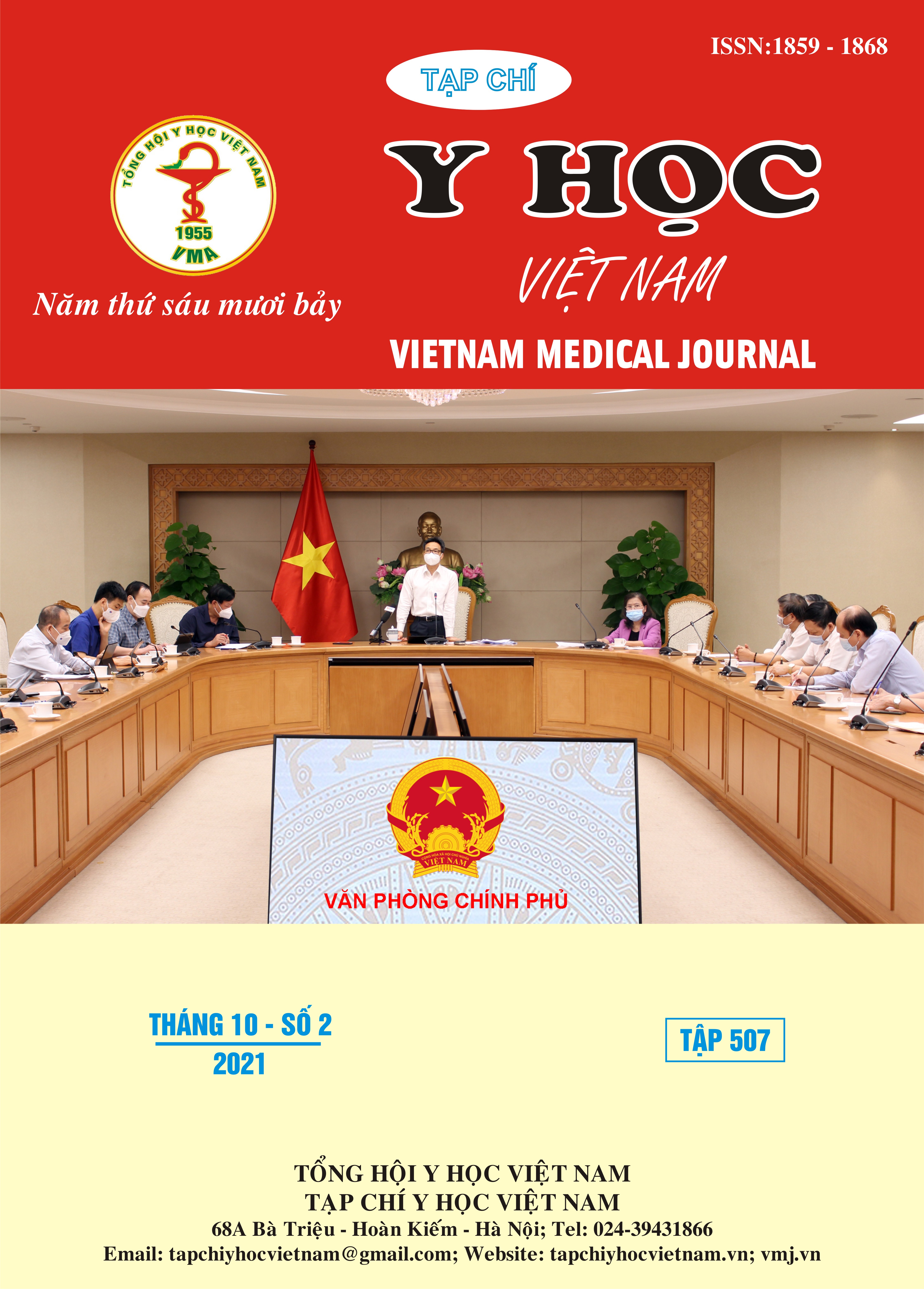CURRENT STATUS OF BIOLOGICAL TREATMENT IN ANKYLOSING SPONDYLITIS PATIENT AT THE DEPARTMENT OF RHEUMATOLOGY – BACH MAI HOSPITAL
Main Article Content
Abstract
Objective: Describe the status of using biological drugs in treatment of ankylosing spondylitis at the Department of Rheumatology in Bach Mai Hospital. Subjects and methods: A prospective cross-sectional descriptive combined with retrospective study on 161 ankylosing spondylitis patients who used biological drugs at the study site from January 2018 to July 2021. Results: The first choice biological drug was belonging to tumour necrosis factor inhibitors (TNFi) (69,6%) and another drug in the class of anti-IL-17 was Secukinumab (30,4%). There was 27,3% of patients switched to other biologic drugs. The adherence rate was 26,1%. The leading reasons for non-adherence were: economy (35,2%) and good response (31,8%), the Covid-19 pandemic (17,6%); of dose dilatation were good response (66,3%), economy (12,8%), the Covid-19 pandemic (12,2%) and out of drugs (1,6%); the causes of drug discontinuation were largely due to economic reasons accounting for 50% and other reasons: Side effects (14,3%), the Covid-19 pandemic (12,2%) and the causes of changing biological drugs were primary nonresponsive (24%) secondary nonresponsive (34%) and side effects (20%). Conclusion: biological drugs that were often preferred for treatment belonging to TNFi. The rate of treatment adherence was low, and the cause of non-adherence was largely attributed to economy, followed by a good drug response to treatment and the impact of the Covid-19 pandemic. Economy, the impact of the Covid-19 pandemic, drugs shortages and failure to respond to biological drugs were the main reasons why patients change or stop taking drugs during treatment.
Article Details
Keywords
Ankylosing spondylitis, biological drugs, treatment adherence
References
2. Micheroli R, Tellenbach C, Scherer A, et al. Effectiveness of secukinumab versus an alternative TNF inhibitor in patients with axial spondyloarthritis previously exposed to TNF inhibitors in the Swiss Clinical Quality Management cohort. Ann Rheum Dis 2020; 79:1203–9.
3. Lindström U, Olofsson T, Wedrén S, Qirjazo I, Askling J. Biological treatment of ankylosing spondylitis: a nationwide study of treatment trajectories on a patient level in clinical practice. Arthritis Res Ther. 2019;21(1):128.
4. Glintborg B, Østergaard M, Krogh NS, et al. Clinical response, drug survival and predictors thereof in 432 ankylosing spondylitis patients after switching tumour necrosis factor α inhibitor therapy: results from the Danish nationwide DANBIO registry. Ann Rheum Dis. 2013;72(7):1149-1155.
5. Michelsen B, Lindström U, Codreanu C, Ciurea A, Zavada J, Loft AG, Pombo-Suarez M, Onen F, Kvien TK, Rotar Z, Santos MJ, Iannone F, Hokkanen AM, Gudbjornsson B, Askling J, Ionescu R, Nissen MJ, Pavelka K, Sanchez-Piedra C, Akar S, Sexton J, Tomsic M, Santos H, Sebastiani M, Österlund J, Geirsson AJ, Macfarlane G, van der Horst-Bruinsma I, Georgiadis S, Brahe CH, Ørnbjerg LM, Hetland ML, Østergaard M. Drug retention, inactive disease and response rates in 1860 patients with axial spondyloarthritis initiating secukinumab treatment: routine care data from 13 registries in the EuroSpA collaboration. RMD Open. 2020 Sep;6(3):e001280.
6. Ki Min H, Kim HR, Lee SH, Hong YS, Kim MY, Park SH, Kang KY. Retention rate and effectiveness of secukinumab vs TNF inhibitor in ankylosing spondylitis patients with prior TNF inhibitor exposure. Rheumatology (Oxford). 2021 Mar 16:keab245.


